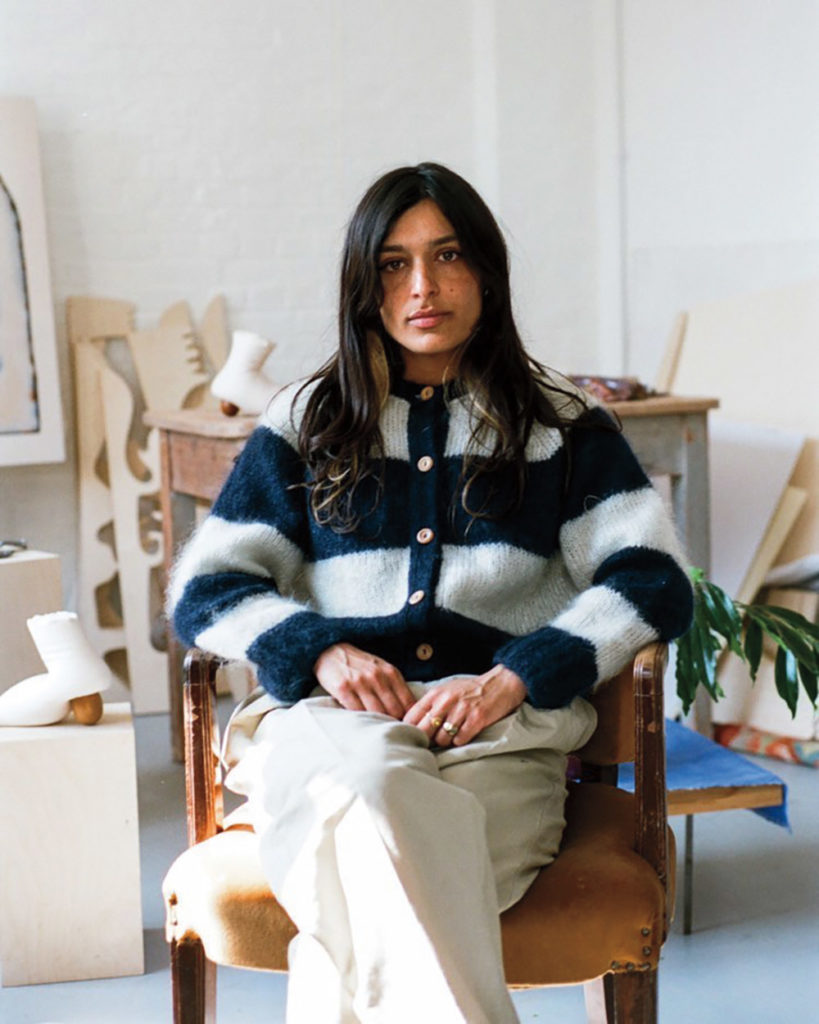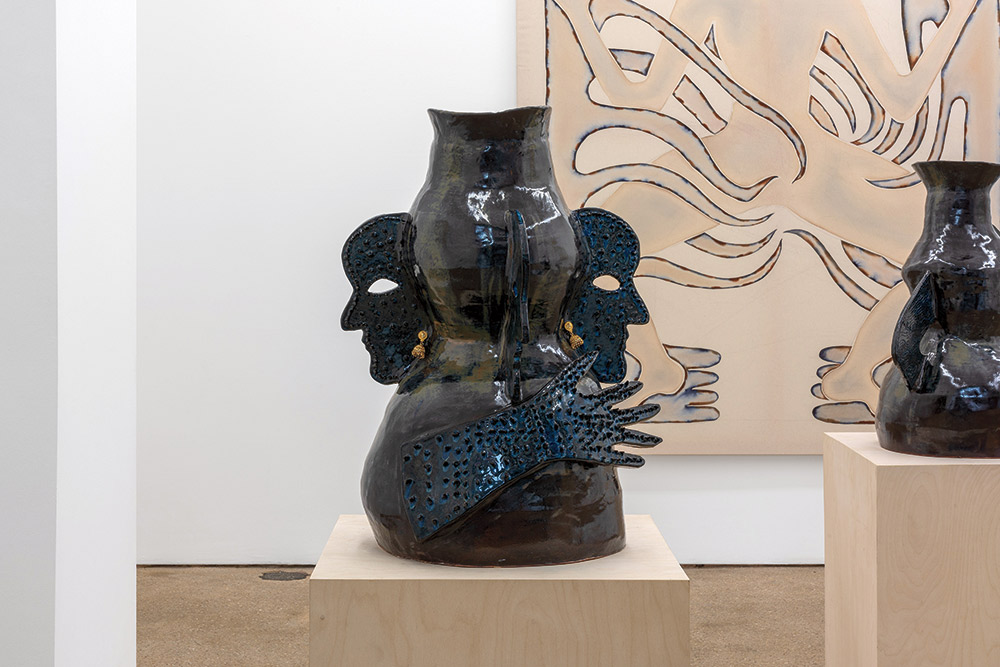I’m interested in building new narratives through my work,” says London-based artist, Anousha Payne, “painting and sculpture are a way of digesting the world in a way that I cannot connect with solely through words.” Payne, who credits magical realism as an inspiration for her work, creates a visual language akin to the literary genre. Like a work of magical realism, Payne’s sculptures and paintings offer an exploration—and ultimately an unravelling—of the boundaries between folklore, dream, reality, and myth.

Often inspired by Indian folklore, her sculptures depict hybridity, animism, and transformation—not only blurring the borders between people, animals, and inanimate objects, but further collapsing the boundary between myth and reality. By utilizing reptile skin in her ceramics, Payne’s sculptures contain thoughtful juxtapositions in both content and form.
Dogmother (vessels for fulfillment) (2022), which was recently featured in a duo show with Laila Tara H entitled “Tangled Toes Twisted Ears” at Public Gallery this past summer, offers one example. In deep blue, glazed stoneware, the sculpture simultaneously takes the shape of a dog, a woman, and a vessel, positioning it as something mythic. Yet this otherworldly state is undermined by a pair of gold earrings the figure wears.

These material contradictions are employed throughout the artist’s body of work. “I like to play with the materials,” says Payne, “making something temporary, like the folding of clay like skin, into something permanent with a metallic feel.” In an upcoming project, Payne will translate a character from her ceramic practice into bronze. “There’s something appealing about the permanence of bronze as a material,” she says, “especially when translating the softness of clay—to push a material that can fold and ooze and make it static.”
The artist’s paintings similarly grapple with the boundaries between myth and experience. In her show, “thick mud slowly oozing,” at New York City’s Stellarhighway, Payne drew on her Irish heritage in a series of self portraits as Corleck Heads done in watercolours and pigments. “Some are left raw and some are depicted as experiencing a transformation,” says Payne, “the characters they are becoming reference a combination of dreams, realities, and folktale characters.”
“The stories I feel most connected to are those that depict women as characters with transformative or magical powers,” says Payne. “Their powers or generosity are often taken advantage of, so I try and reframe them in an empowered light—returning their autonomy to them.”

